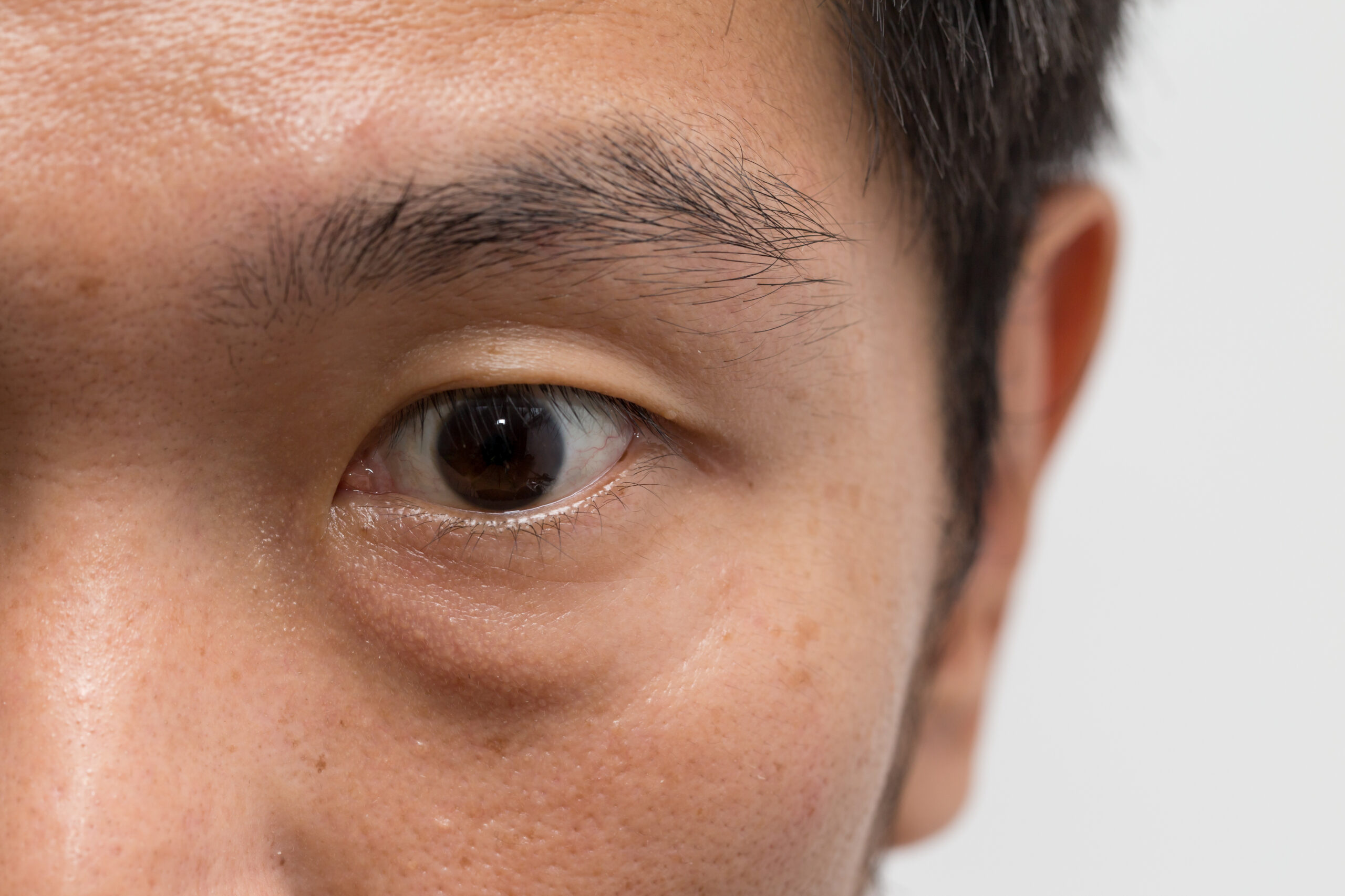If you’ve decided to remove your eye bags with surgery, you’re probably looking forward to a fresher, more youthful appearance. But like any cosmetic procedure, the results don’t appear overnight, and recovery depends on how quickly and well you heal.
This guide walks you through what to expect after eye bag removal surgery. Knowing what’s normal, what to avoid, and how to care for yourself during each phase will help you recover and get the results you want from your eye bag surgery.
Immediately After Eye Bag Surgery: The First 48 Hours
1. In the Recovery Room: What to Expect and Initial Care
Once the eye bag removal surgery is done, your medical team will transfer you to a recovery room, where they will monitor your vital signs and ensure your stability. You may feel groggy due to the anaesthesia, and your vision might be slightly blurry. Mild discomfort, tightness around the eyes and watery eyes are common during this time.
The staff may cover your eyes with cool compresses or lubricated ointments to reduce swelling and protect the incisions. Most patients can return home the same day, accompanied by a friend or family member.
2. Managing Pain, Swelling, and Bruising: Essential First Steps
Swelling and bruising typically reach their peak within the first 48 hours. Apply cold compresses every 10–15 minutes for the first few hours, then every couple of hours throughout the day. Keep your head elevated, even while sleeping, to help minimise fluid buildup.
Expect pain to be mild to moderate. Your surgeon may prescribe medication to help relieve the pain.
3. Essential Care Instructions: Preventing Infection and Promoting Healing
Your surgeon will give a detailed post-operative care plan. Follow all directions carefully to reduce your risk of infection and other complications. Instructions may include:
Keep the surgical site clean and dry.
Apply prescribed antibiotic ointments to incision lines.
Avoid rubbing or touching your eyes.
Do not wear contact lenses.
Refrain from wearing makeup.
Week 1 at Home: Your Daily Recovery Routine
1. Your Daily Care Routine: A Step-by-Step Guide
In the first week, consistency is key. A basic daily routine may look like this:
Morning: Gently cleanse the area with sterile saline or as directed, apply ointment, and use cold compresses.
Afternoon: Take a short walk to encourage blood flow, then rest with your head elevated.
Evening: Repeat cleaning and ointment application. Use cold compresses to reduce swelling.
Before bed: Ensure your sleeping environment is clean and dust-free to avoid irritation.
2. Sleeping Positions and Habits: Optimising Comfort and Reducing Swelling
Sleep on your back with your head elevated at a 30- to 45-degree angle. Use two pillows or a wedge pillow. Avoid sleeping on your side or stomach to prevent pressure on the eyes. Maintain a cool, humidified environment to prevent dryness or irritation around your eyes.
3. Activity Restrictions: What to Avoid During the First Week
To protect your eyes:
Avoid heavy lifting or bending over
Avoid strenuous exercise or activities that raise blood pressure
Do not drive until your vision is clear and your surgeon gives the all-clear
Avoid alcohol and smoking, as they can delay healing
Give your body time to rest and repair. Most patients see noticeable improvements in swelling and bruising by the end of the first week.
Weeks 2–4: The Long-Term Recovery Timeline and What to Expect
1. Weeks 2–4: Gradual Healing and Disappearance of Bruising
By week 2, bruising and swelling should begin to subside significantly. Any residual discolouration can usually be covered with makeup (with your surgeon’s approval). If you have non-dissolvable stitches, the doctor will remove them within 5 to 7 days after the procedure.
During weeks 3 and 4, the tightness and mild discomfort should continue to ease. Most patients feel more like themselves and can return to work and social activities with confidence.
2. Returning to Normal Activities: A Phased Approach
Start reintroducing normal activities gradually:
- Week 2: Light walking and daily tasks are generally fine.
- Week 3: Resume non-impact exercises like yoga or stationary biking.
- Week 4: You may resume more vigorous workouts, pending your surgeon’s approval.
Makeup, contact lenses, and skin care routines may also be resumed around this time. Always get clearance from your surgeon before doing so.
3. Sun Protection Guidelines: Protecting Your Investment
Healing skin is especially sensitive to UV rays. To protect yourself:
Wear large, UV-protective sunglasses when outdoors.
Apply broad-spectrum sunscreen (SPF 30 or higher) around the eyes once your surgeon says it’s safe.
Avoid direct sun exposure during peak hours.
Sun protection should become a lifelong habit, not just during recovery. It helps preserve your surgical results and prevents further skin ageing.
Your Follow-Up Care Schedule: Ensuring Optimal Healing
Regular follow-up appointments enable your surgeon to monitor your healing progress and tweak your care plan as necessary. A typical schedule might include:
First follow-up: 3–5 days post-surgery to check incisions.
Second follow-up: 1–2 weeks post-op to remove stitches and assess healing.
Additional follow-ups: To be conducted at 1 month, 3 months, and possibly 6 months to evaluate results and address any concerns.
Attend all scheduled appointments and inform your doctor of any unusual changes in your recovery. They may also advise you on scar treatment options if needed.
When to Contact Your Surgeon: Recognising Potential Complications
While complications are rare, you should contact your plastic surgeon immediately if you experience:
- Sudden, severe pain or vision changes
- Increasing redness, swelling, or pus around the incision
- Fever over 38°C
- Bleeding that doesn’t stop with gentle pressure
- A pulling sensation or bulging that worsens
Schedule Your Eye Bag Removal Surgery Consultation Today
Recovering from eye bag surgery in Singapore requires patience and conscientious care, but the result can be a youthful appearance and improved confidence.
At Argent Plastic Surgery, we will assess your needs, walk you through the procedure, and explain what to expect before, during, and after surgery—so you can make an informed decision.

